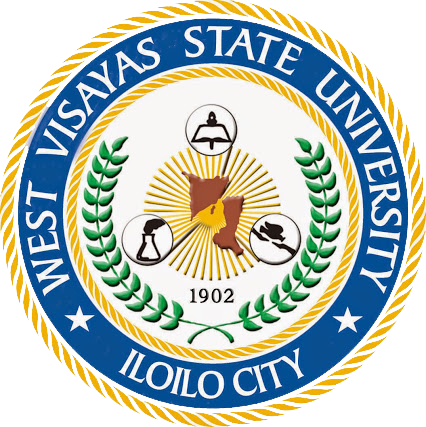Predictors of fecal coliform in Iloilo-Batiano River Basin, Iloilo Philippines
| dc.contributor.advisor | Figueras, Jeannemar Genevive Y. | |
| dc.contributor.author | Horvidalla, Jon Alfonso P. | |
| dc.date.accessioned | 2024-07-22T06:34:35Z | |
| dc.date.available | 2024-07-22T06:34:35Z | |
| dc.date.issued | 2023-07 | |
| dc.identifier.citation | Horvidalla, J. A. P. (2023). Predictors of fecal coliform in Iloilo-Batiano River Basin, Iloilo Philippines. [Master’s thesis, West Visayas State University]. WVSU Institutional Repository and Electronic Dissertations and Theses PLUS. | en |
| dc.identifier.uri | https://hdl.handle.net/20.500.14353/550 | |
| dc.description.abstract | Fecal coliform (FC) is a key water quality parameter and indicator of bacterial contamination from human and animal wastes used by the DENR-EMB on their periodic monitoring of water quality management areas (WQMA) in the Philippines. IBRB is a WQMA classified as a Class C water body, following the standards set by DENR DAO No. 2016-08 and 2021-19. The current study assessed the relationship of FC loading along IBRB with that of other water quality parameters and physical and environmental factors. Mean FC load along IBRB was 6.99 x 105 MPN/1OOmL, over the standard limit for Class C waters. FC was found to have a positive and significant relationship with SAMPLING-POINT (z=.876; p=.O22) and TSS (/=.899; .015); while negative and significant relationships were observed with pH (r=-1.000; p=.000) and TEMP_C (r=-.999; p =.000). Multiple regression analysis further showed SAMPLING-POINT, pH, and TSS highly explains FC load in IBRB (R2=1.000; p=.000); wherein, FC loading increases together with increasing TSS, moving towards IBRB's headwaters, and as pH decreases. TSS was also found to have a positive and significant relationship with rainfall (/=.727; p=.O26), driving TSS loading in IBRB - increasing FC load. The study demonstrated the critical drivers of FC loading in IBRB. This could serve as basis for interventions and improvements on the management of IBRB by the local government units of Iloilo City and Oton by focusing on fecal contamination on domestic waters and water ways along populated areas; securing clean water and public health. The DPWH together with the LGUs may also improve sewage systems to prevent siltation along IBRB most especially during heavy rainfall events, while DENR-EMB could also make use of the results in implementing measures and strategies in preventing possible increase in FC load - focusing on identified areas that needs to have clean water management interventions. | en |
| dc.format.extent | xviii, 132 p. ill.(col.). | en |
| dc.language.iso | en | en |
| dc.publisher | West Visayas State University | en |
| dc.subject | Fecal Coliform | en |
| dc.subject | Total Suspended Solids | en |
| dc.subject | Iloilo River | en |
| dc.subject | Batiano River | en |
| dc.subject | River Basin | en |
| dc.subject | Iloilo-Batiano River Basin | en |
| dc.subject | Predictive modeling | en |
| dc.subject | Upstream | en |
| dc.subject | Midstream | en |
| dc.subject | Downstream | en |
| dc.subject | Fecal contamination | en |
| dc.subject | Waste water management | en |
| dc.subject | Water quality management areas | en |
| dc.subject | Water quality assessment | en |
| dc.subject.lcsh | Enterobacteriaceae | en |
| dc.subject.lcsh | Watersheds | en |
| dc.subject.lcsh | Water quality | en |
| dc.subject.lcsh | Water quality management | en |
| dc.subject.lcsh | Predictive control | en |
| dc.subject.lcsh | Bacterial pollution of water | en |
| dc.subject.lcsh | Marine pollution | en |
| dc.subject.lcsh | Waterworks--Waste disposal | en |
| dc.subject.lcsh | Water quality biological assessment | en |
| dc.subject.lcsh | bioassessment | en |
| dc.title | Predictors of fecal coliform in Iloilo-Batiano River Basin, Iloilo Philippines | en |
| dc.type | Thesis | en |
| dcterms.accessRights | Limited public access | en |
| thesis.degree.discipline | Microbiology | en |
| thesis.degree.grantor | West Visayas State University | en |
| thesis.degree.level | Masters | en |
| thesis.degree.name | Master of Science in Biology | en |
| dc.contributor.chair | Sobrevega, Saturnino Luke A. | |
| dc.contributor.committeemember | Lopez, Crisanto Jr. S. | |
| dc.contributor.committeemember | Tantiado, Rey G. | |
| dc.contributor.committeemember | Mendoza, Sharon Ann P. |
Files in this item
This item appears in the following Collection(s)
-
2. Master's Theses [162]






